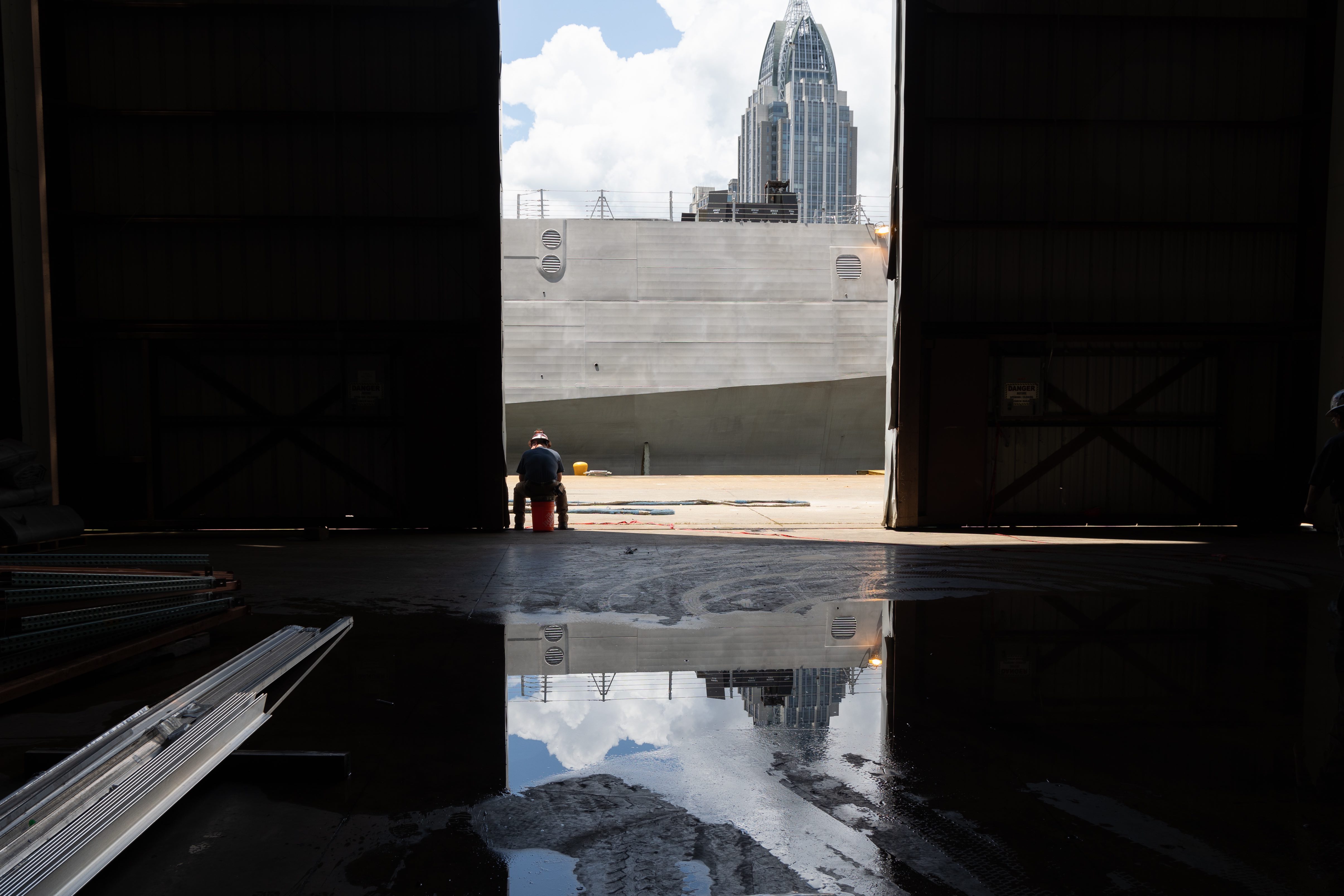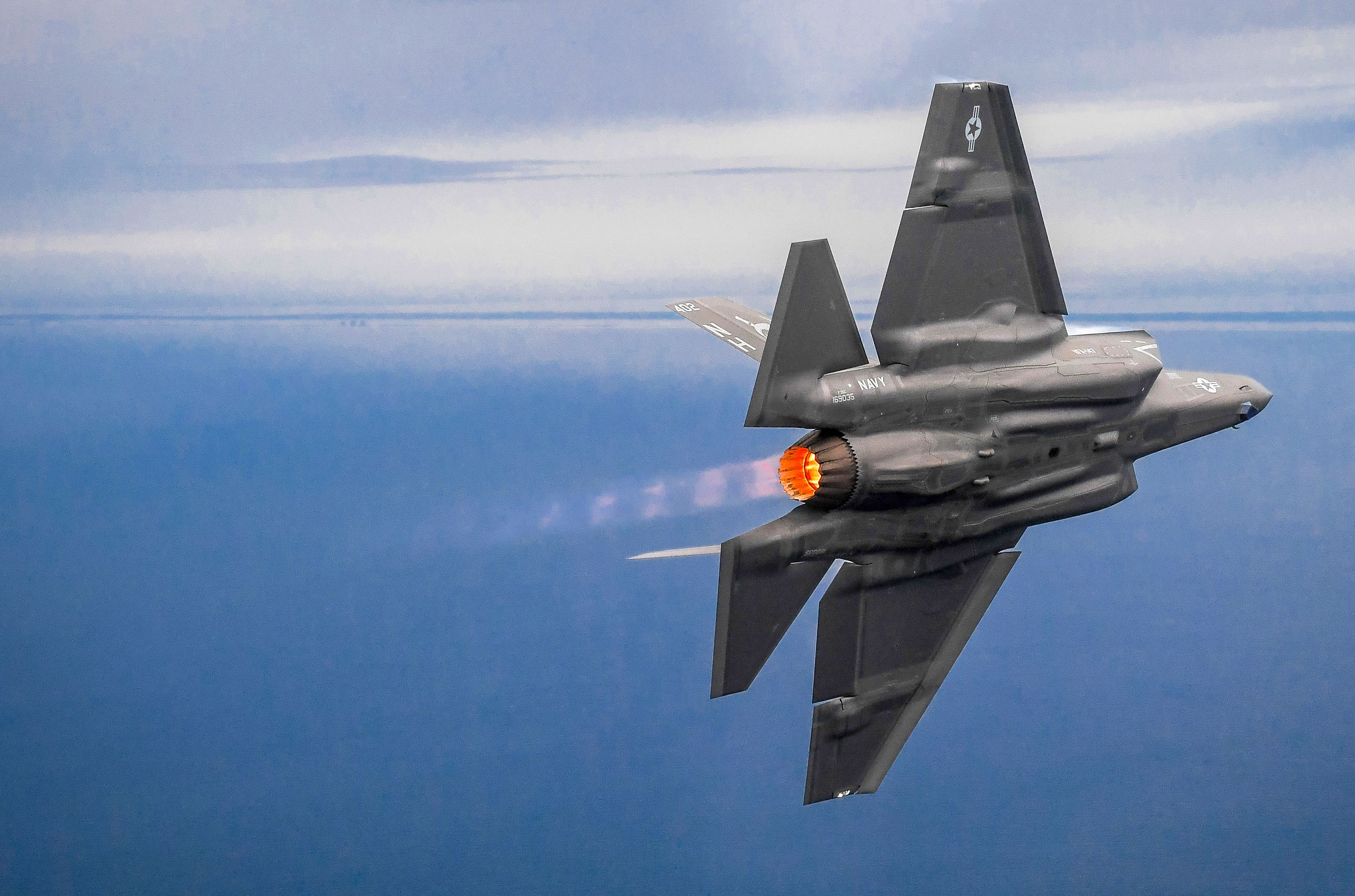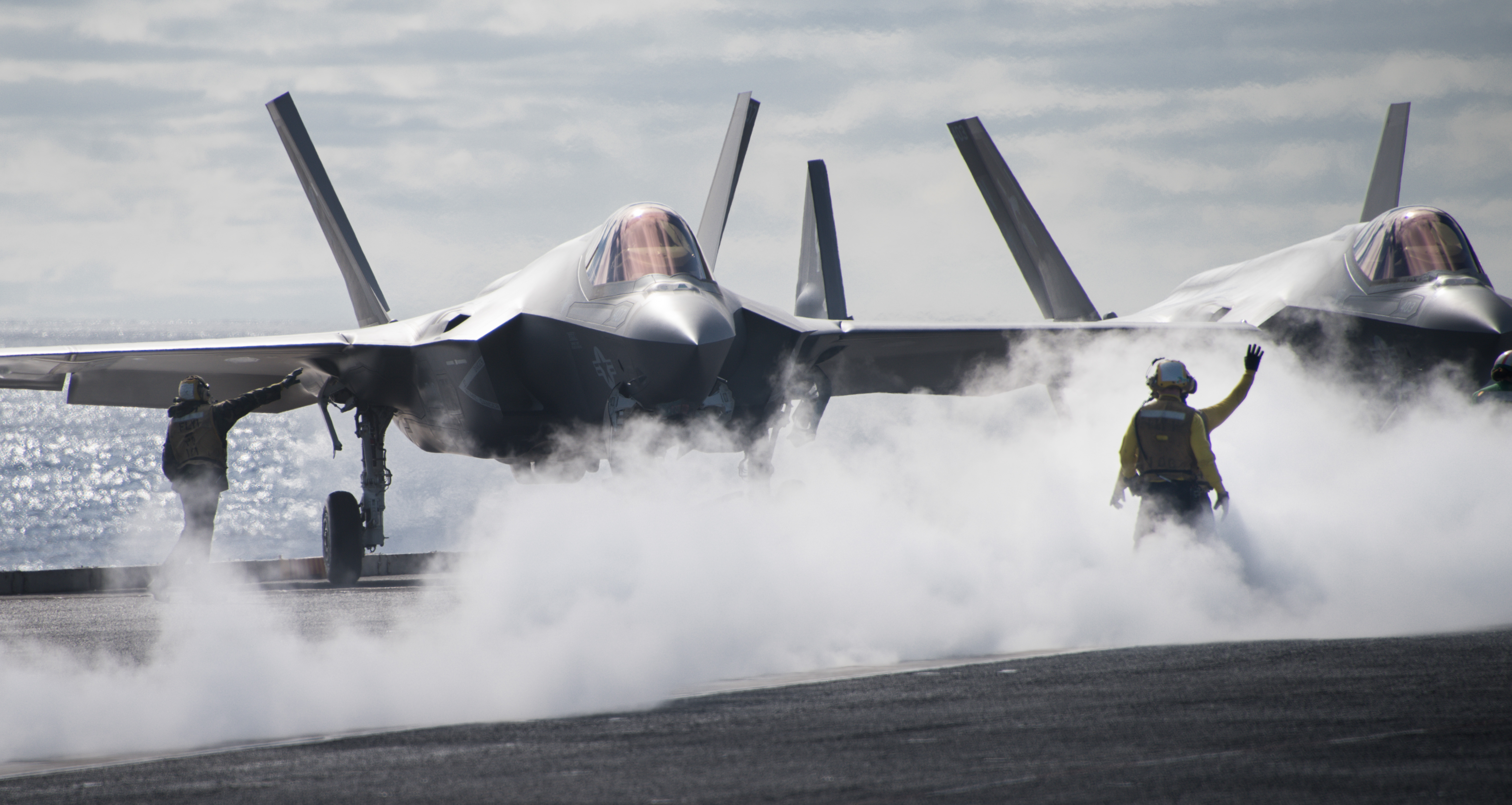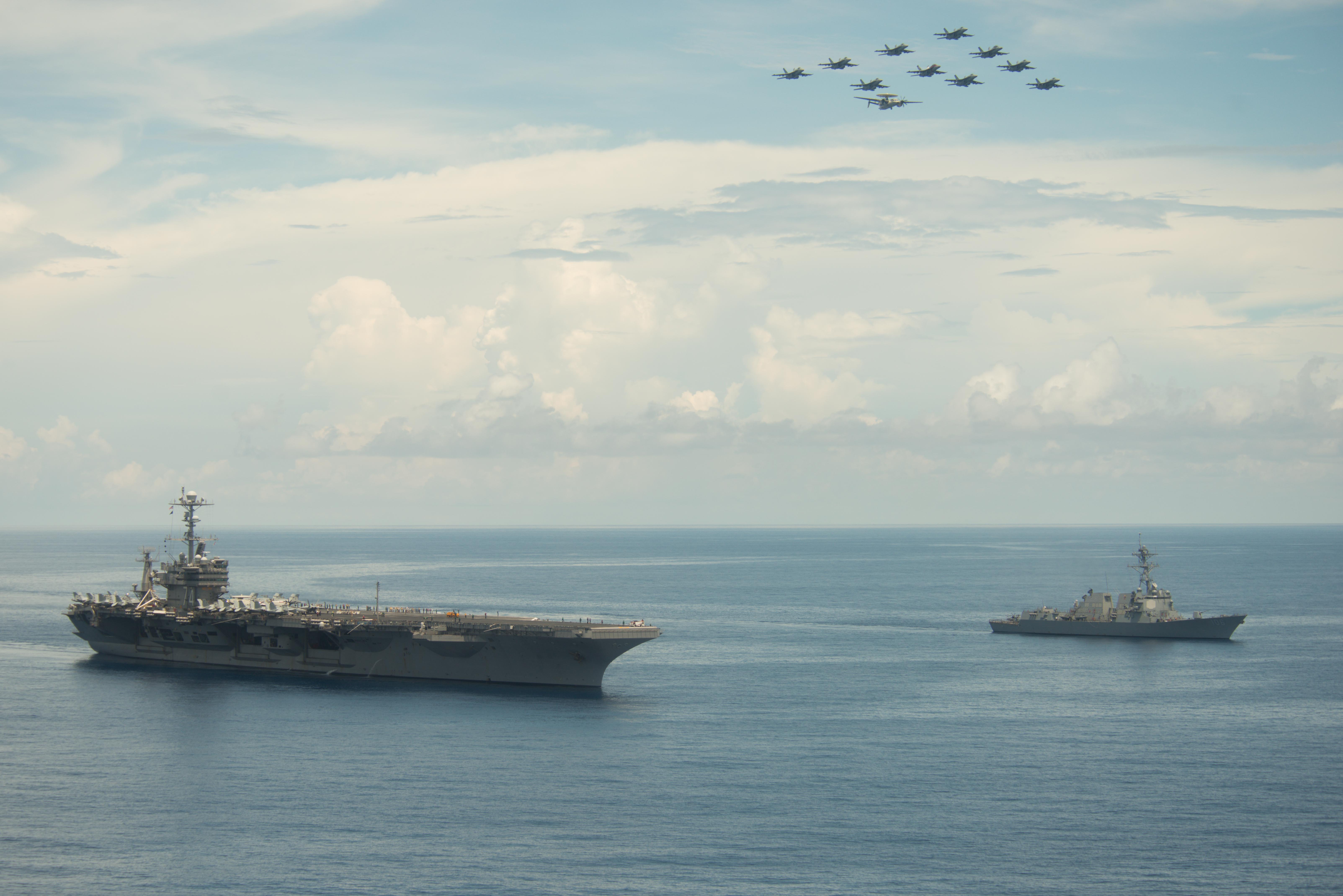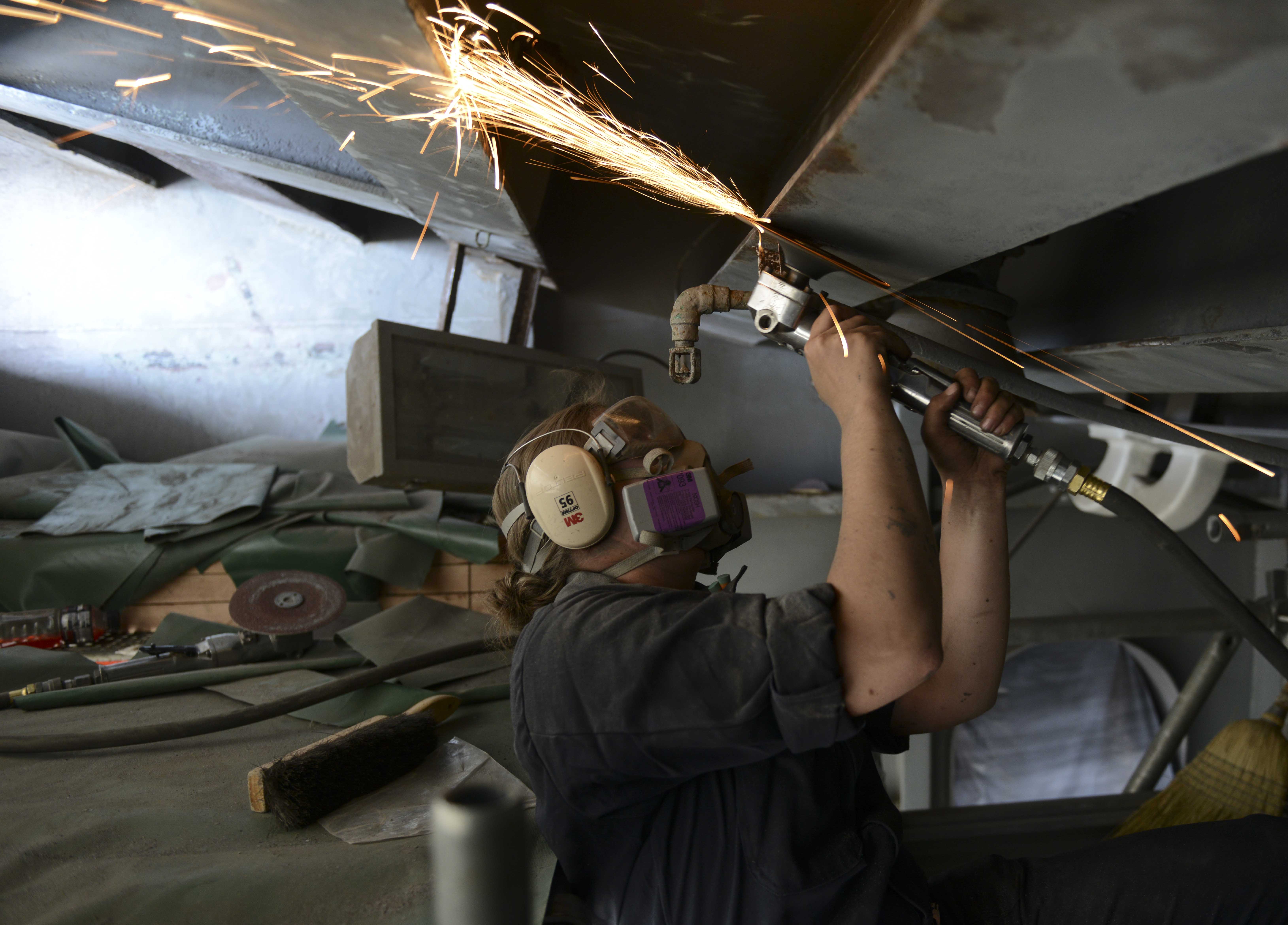
HAMPTON, VA. — New commander of Naval Sea Systems Command Vice Adm. Tom Moore said shipyards are nearing an opportunity to “reset” after struggling in recent years to get aircraft carriers and submarines out of availabilities on time, and he hopes the yards can take measures now to keep the next wave of availabilities on track.
Moore told USNI News that the list of carriers and subs in maintenance looks better today than it did eight months ago. USS Nimitz (CVN-68) will leave Puget Sound Naval Shipyard and Intermediate Maintenance Facility next month after an extended planned incremental availability that stretched from 16 to 21 months. And USS George H.W. Bush (CVN-77) departed Norfolk Naval Shipyard in July after spending more than a year in a maintenance availability estimated to take eight months.
“We’ll kind of get a clean slate, and my message to the team is, we’re kind of getting a reset here, now as we start to do these availabilities … it’s really important that we now get back to delivering these ships on time,” he told USNI News after giving a speech at the American Society of Naval Engineers’ annual Fleet Maintenance and Modernization Symposium.
“So today we’re in a better balance than we’ve been, but the demands aren’t going down and it doesn’t take much for us to have a delay and to get right back to what we were facing. And for all the discussion about we’d like to get to seven-month (deployments), at the end of the day we’re going to use the forces we have to meet the (combatant commander) demand. And so while we’d like to be at seven, NAVSEA’s commitment is to get the ships out on time so we can get those deployment lengths down, because if you don’t have the carriers there then somebody else has to take that commitment.”
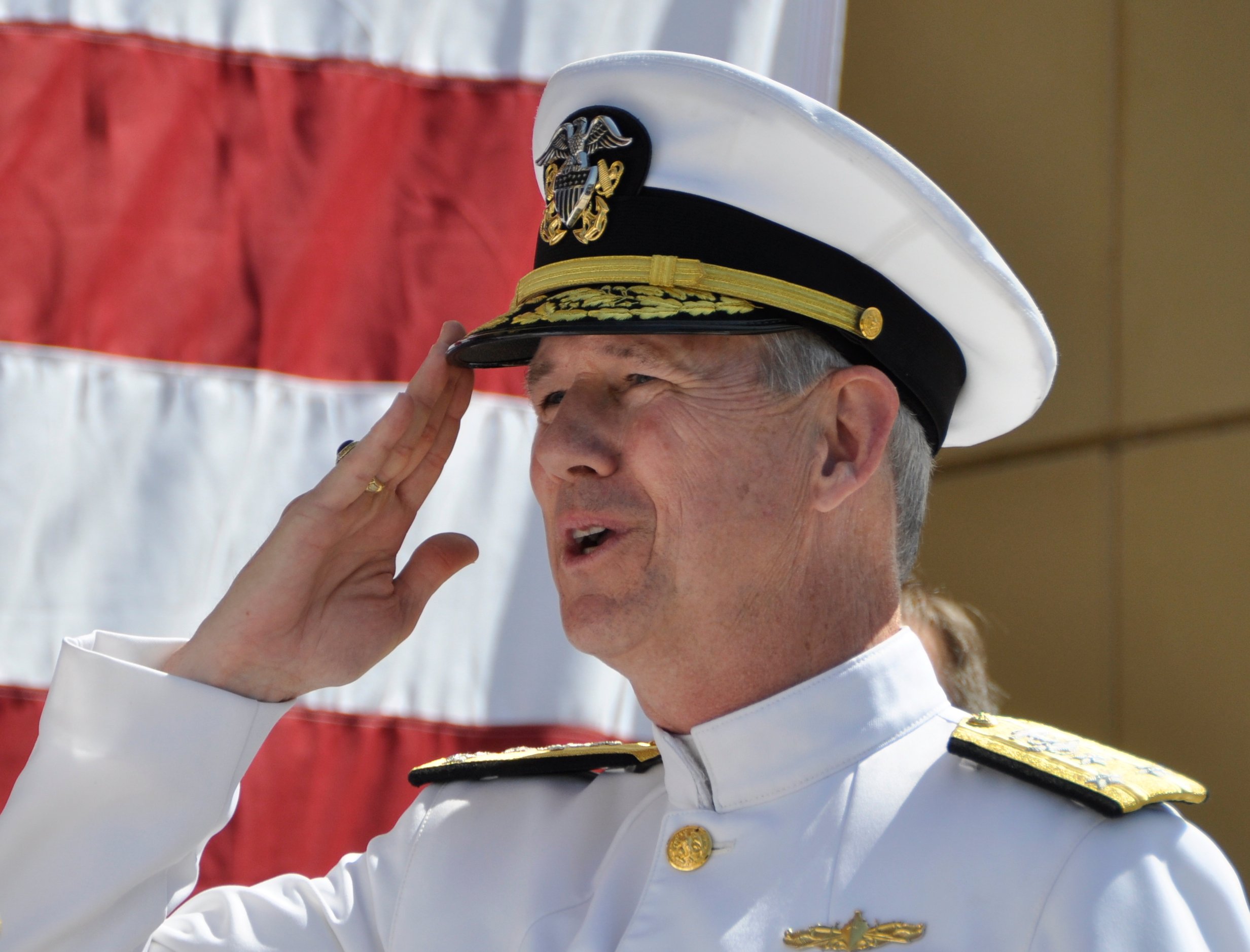
During his presentation, Moore said he has three priorities in his new job: ships and submarines should deliver on time after maintenance availabilities, NAVSEA should have a culture of affordability, and cyber should always be a consideration.
Focusing on the first priority, Moore said that the Navy today has 275 ships total, with 55 in major chief of naval operations availabilities and about half the fleet in undergoing some level of maintenance work.
“Frankly, your track record in the last five to 10 years has not been very good in terms of delivering those ships back to the fleet on time,” he said to the government and industry employees in the audience.
“The result of that is we’re putting additional stress on the rest of the force, both on the platforms and on the people.”
He noted that private yards have turned a corner in recent years and are delivering surface ships on time at a better rate, but he said there is work to do all around to improve performance.
Specifically, Moore listed three “fundamental” things that needed to happen to allow on-time delivery of ships and submarines.
First, he said, “we have got to do a better job of matching the budget to the requirements. Said another way, we’ve got to do a better job of matching the budget that we program two years prior to the budget that we actually execute.”
Moore noted that the fleet has had a consistent $600 million to $700 million shortfall every year in recent years when it comes to ship maintenance funding. The Navy responds by delaying a couple availabilities into the next fiscal year, which then creates unanticipated requirements for that next fiscal year and starts it out at a deficit, which forces other availabilities to get pushed back a year.
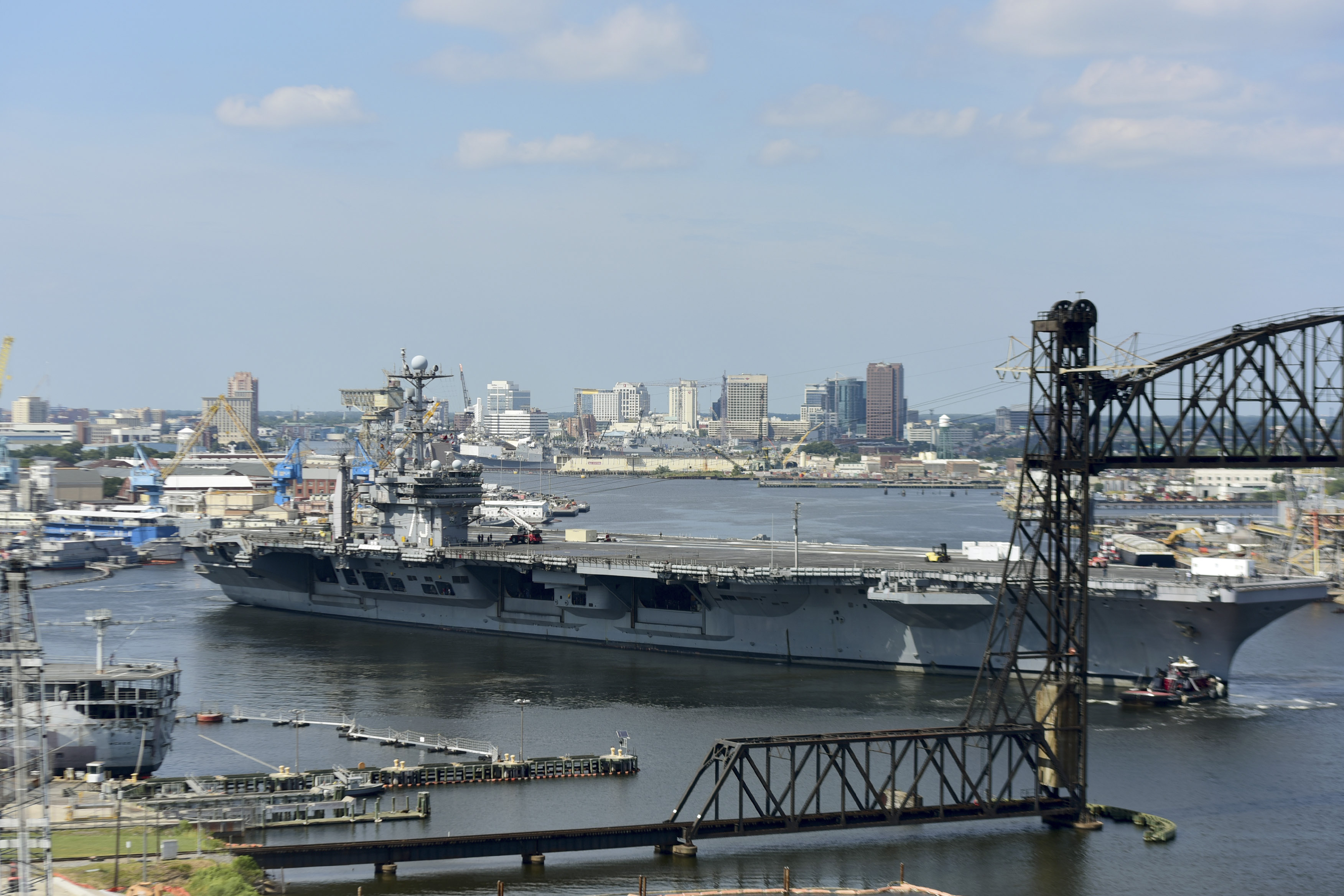
“Why can’t we get that gap closed? Because at the end of the day if we don’t have the right funding in place in the year of execution and the funds arrive late then it causes a lot of churn, and it’s something we’ve got to go fix,” he said.
Second, Moore stressed the need to match the workload with the capacity at each shipyard. He said that, while that sounds obvious, many times a shipyard knows it doesn’t have the capacity to take in a new ship availability but will induct the ship anyway, hoping to do the best it can and ultimately announcing late in the availability that it will deliver the ship months late.
He said that recently there’s been a push for more dialogue between the shipyards and the fleet commanders just prior to inducting a ship into an availability, but those conversations still need to happen earlier and he’s been pushing his staff to get the discussion started more than just weeks or months ahead of an availability.
“We had (USS) Boise (SSN-764) this summer that we were going to induct into Norfolk Naval Shipyard. The shipyard said the availability, which would typically take 24 months, was going to take 47 months because it didn’t have the capacity – so we’re talking about a submarine availability taking as long as an aircraft carrier refueling and overhaul,” Moore said.
“So in the old days we would have stuffed it in there, we would have kept it in there for 47 months without the work capacity to get it done, and today at least we made the rational decision, we’re not going to put it into the yard if we don’t have the capacity to get the work done. Now that comes with a whole host of other problems, in particular with submarines because they have maintenance that has to be done on them before they can submerge. So we’re trying to come through that.
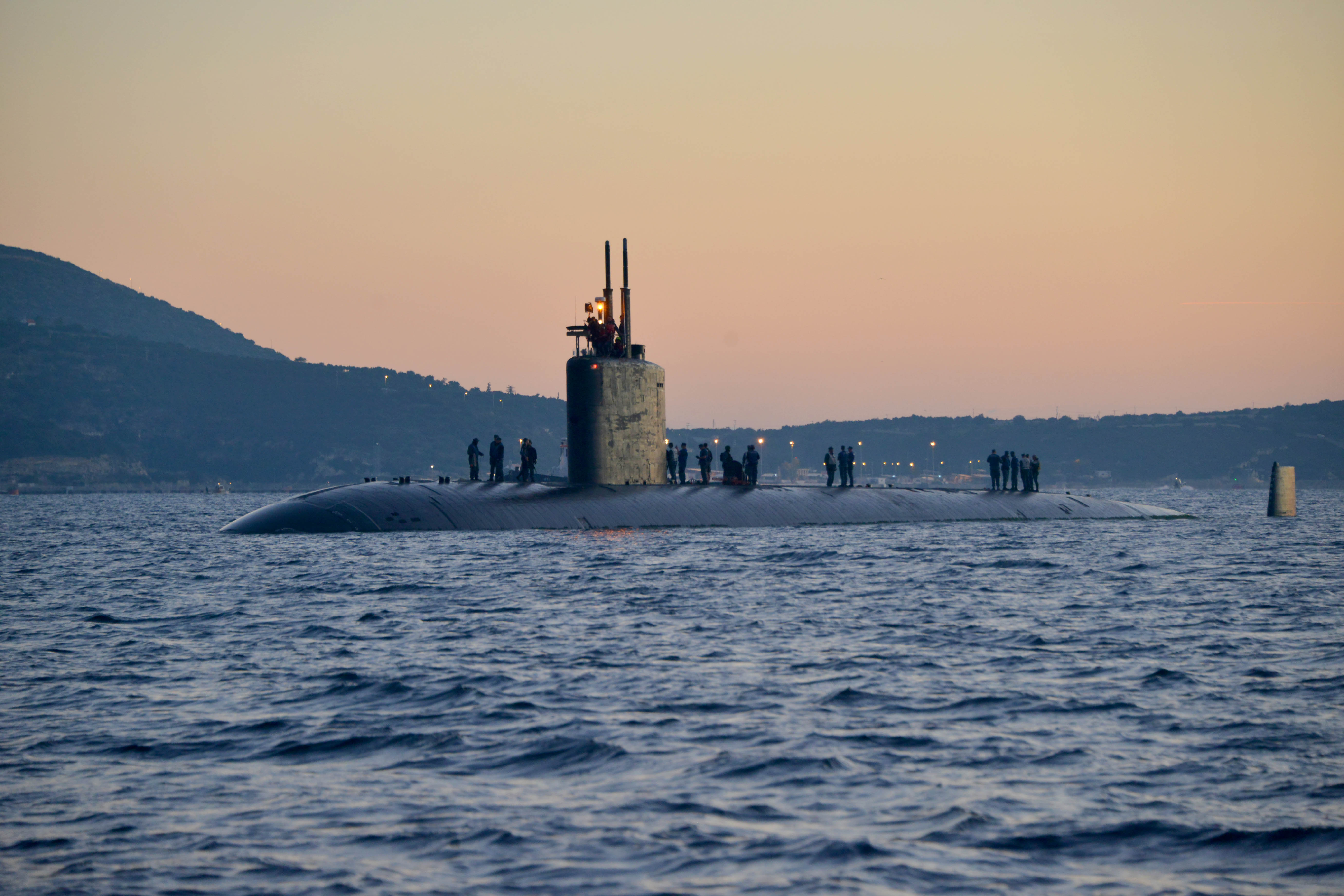
“My point is, we’re starting to make better decisions and get out in front of these availabilities sooner than we have in the past, but my goal as commander of NAVSEA is to start having these discussions two years out, with the ultimate goal of having a decision made for the fleet commander no later than one year before we induct the availability,” he continued.
“If you do that then the fleet commanders will have the flexibility either with the global force management schedule or with the size of the work package for us to make some rational decisions.”
And third, Moore said, the shipyards themselves are going to have to find ways to be more productive and efficient, given the personnel and the funding they have today. He made clear this was not an indictment of the shipyards’ performance but rather an acknowledgement that funding is tight and the yards would need to find innovative ways to keep up with the fleet’s demands in a resource-constrained environment.
Innovation is already happening at a local level, Moore said, having toured the shipyards and regional maintenance centers since taking over as commander of NAVSEA on June 10. But good ideas seem to be only shared from one department to another within a single shipyard. He called for a collaborative effort between not just the Navy’s public yards but also private shipyards so that the whole fleet can benefit from what he called pockets of rapid learning.
Moore said his staff could do more to make shipyards more efficient through more effectively advocating for money for facilities upgrades.
“I do not think we’ve made the right business case to the CNO for our naval shipyards to make some investments in MILCON (military construction funding),” he said.
“I go look at the private sector, I’ll just use Newport News as an example because I’ve worked with them a lot – they have spent a lot of money on improving their physical plan. They’ve built new welding machines, they’ve built new blast and coat facilities, they’ve built mobile tents outdoors so we can work inside, they’re building a new facility to do more work inside for both the Ford (aircraft carrier) class and the Ohio (replacement submarine) class. So they were able to take some of their own money to do that and they get a return on investment. … We tend to run around like beggars with a cup out, we haven’t made a very good case to OPNAV during a constrained budget environment about why it would make sense to spend money on MILCON for our naval shipyards to not only improve the drydocks, which tends to be where most of our effort goes, but providing more up-to-date equipment or a more streamlined workflow within the shipyards today.”
Challenges To On-Time Delivery
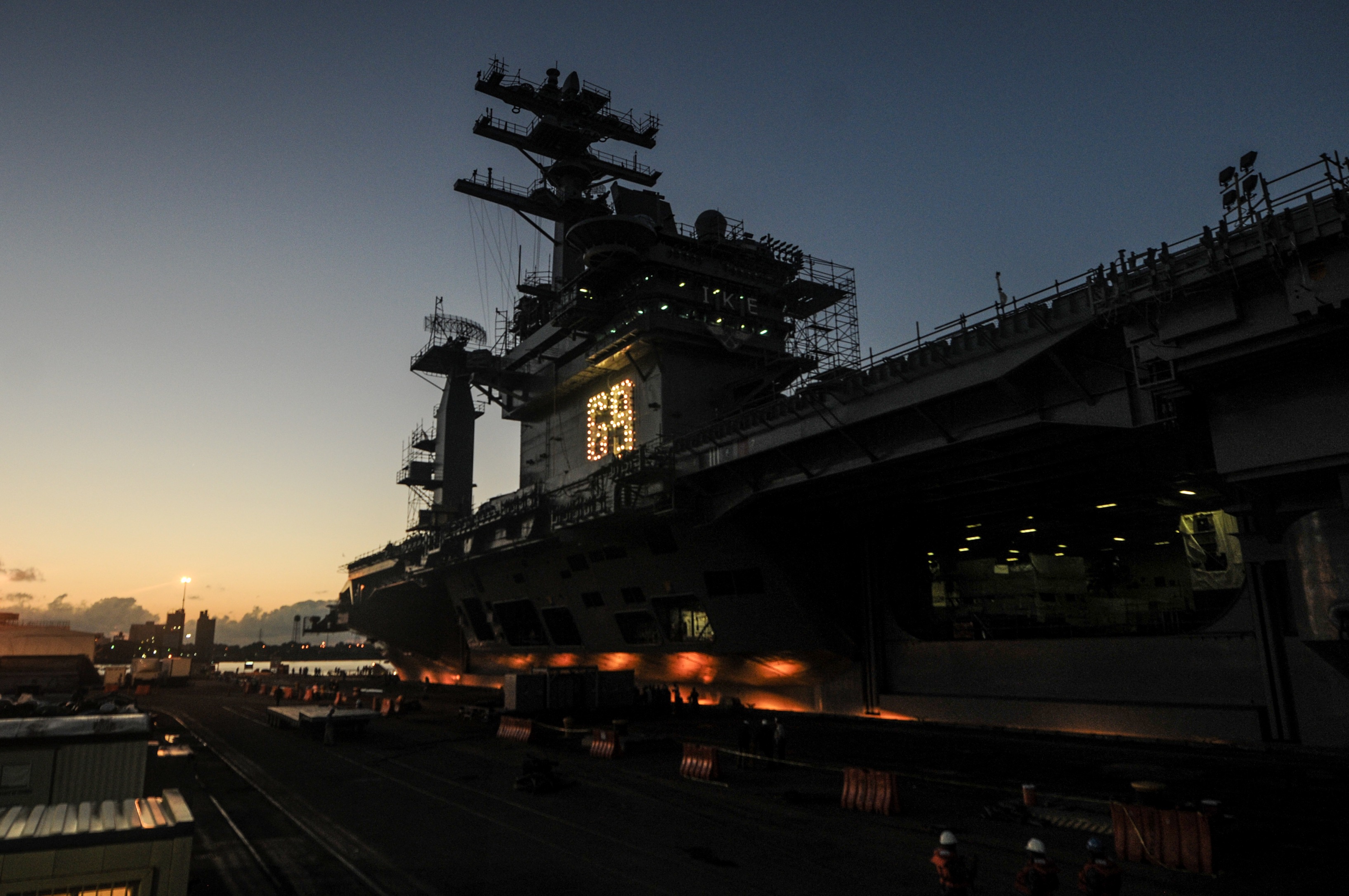
Moore will face some challenges in implementing his commander’s intent. A panel of maintenance leaders outlined the realities of maintaining and modernizing today’s fleet in a panel at the same event.
Rear Adm. Stephen Williamson, the U.S. Pacific Fleet director of fleet maintenance, said that “our focus out in the Pacific Fleet is ensuring that both our public and private sector workload, workforce and resources match.”
Williamson, pulling from his previous experience commanding the Puget Sound Naval Shipyard & Intermediate Maintenance Facility, said that level-loading the work may be easier said than done, though. Workforce efficiency in flux as experienced shipyard workers retire and industry and the Navy look for new ways to quickly train young employees. The types of ships and systems being worked on are also growing more complex, and the result is that sometimes it looks like the yards are being given an optimal level of work and still find themselves unable to deliver ships on time.
“if I see ships that are not overlapped, sort of head to tail, which would be a pretty decent profile, and they’re not delivered on time, I am telling (the shipyards) to lower that dotted line (with the optimal work level) and say no, whatever number you got from whatever industry gave you that said that’s the optimal number for them, it’s not correct,” he said.
“I’m trying like heck at least down in the Pacific … to level-load as much as possible, and if I see the dotted lines of, hey here’s my optimal number and we’re not delivering, we’re going to adjust. And when we adjust we’re going to make decisions on whether or not we can continue to put the work in the place that it’s at or is it better to move it” to another yard and risk ripple effects.
Another component is accurately predicting and then holding steady the actual amount of work being done in a maintenance availability, Rear Adm. Jim Downey, NAVSEA deputy commander for surface warfare and commander of Navy Regional Maintenance Centers, said during the panel. Plans for availabilities are made based on class maintenance plans and hull-specific information, tracked by the Surface Maintenance Engineering Planning Program (SURFMEPP), and the Navy tends to plan for a 20-percent growth in work.
Downey said though that the timing of the unplanned work matters – over the last three years, if changes to the work package were incorporated before the availability was 60 percent complete, there were zero lost operational days as a result. When changes were made after the 60-percent mark, hundreds to thousands of operational days have been lost as a result.
“We will be extremely laser-focused on that and making sure that contract authority is at the waterfront” to help incorporate new maintenance requirements into the work package as soon as it is identified so as to avoid delays.
Downey told USNI News after the panel that his office is actively looking for new ways to reduced unplanned work requirements. Since most of the unplanned work – particularly items that are added after the 60-percent point – are identified when tanks and other spaces are opened and inspected once the ship arrives in the shipyard, “what we’re doing to move that [work identification] further to the left is more surveillance on the ships, more ship visits, more pre-inspection activity. … We’re increasing in our planning process the ship visits well ahead of the availability to go ahead and do their visit and do their sampling on our most disruptive areas” that drive the bulk of the work identified late in the maintenance process.


